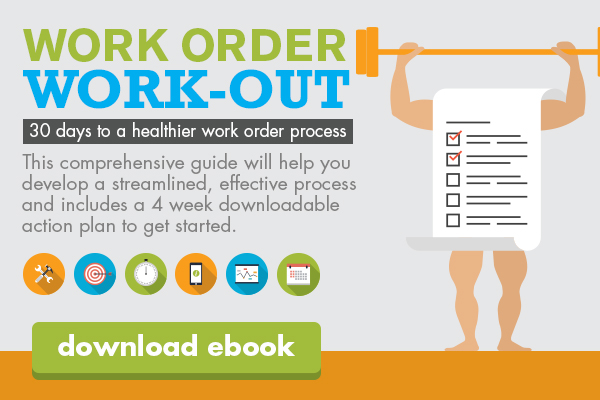How to Get Your Employees to LOVE Your Work Order Tool


You have done your research, pitched your case to the C-suite, and gotten them on board with the idea of investing in FM software. The hard part is over, right? Wrong – your journey has only just begun. The point in investing in such tools is to enhance your employees’ work experience, reducing time spent on monotonous tasks and increasing communication across the entire company. To achieve your organizational goals, it is imperative that your workforce is onboard with this investment – the more they love it, the more success you will find.
Work Order software, otherwise known as Service Request software, stands to be one of the soundest investments your company can make. In choosing the right tool for your company, users will have the ability to submit service requests, provide details regarding their needs, and access status updates along the way. Technicians, whether in-house or subcontracted, have the same capabilities, allowing for a more streamlined process. Preventative maintenance plans are not just proposed and forgotten, they are implemented and automated, allowing for added efficiency. And by having all of your service request information in one place, your team gains valuable insight into company processes, what procedures should be abandoned or tweaked, as well as how to predict and plan for future needs.
With so many positive attributes, it seems like a no-brainer to invest in a Work Order tool, right? But the truth is, change is intimidating and often unwelcome. For your investment to truly be successful, you want your workforce to not only use the tool, but LOVE it. So, how do you successfully get your employees to use the new software, especially one that is seemingly irrelevant to their individual jobs? Follow these simple guidelines throughout the implementation process and your workers will not only use the tool; they will be excited about it!
1) Involve People from the Start
If your employees don’t feel connected and engaged, they are less productive. Since increased productivity and efficiency is the end goal, it makes sense to involve your workforce throughout the entire process. Your staff is comprised of many different types of individuals, all with their own work styles and needs. By involving a wide array of people from the start, you ensure you’ve made a sound investment that can accommodate both individual and organizational needs. The most successful of companies have multiple ways of engaging their employees in planning and decision-making, allowing them to feel a sense of ownership in the process. And owners are always seeking out new ways to improve.
2) Choose an Ambassador
Enlist one of your tech savvy employees as a representative. Involving them throughout the entire process  will offer multiple benefits – you will gain insight as to which tool is the right fit for your company’s goals and mission and the individual will understand the intricacies of the system and its functionality. Be sure to select an ambassador that isn’t intimidated by new innovative tools and have them test out and play around with the system. Organize a meeting where this employee can help in introducing the tool and share their enthusiasm. Their energy will be contagious.
will offer multiple benefits – you will gain insight as to which tool is the right fit for your company’s goals and mission and the individual will understand the intricacies of the system and its functionality. Be sure to select an ambassador that isn’t intimidated by new innovative tools and have them test out and play around with the system. Organize a meeting where this employee can help in introducing the tool and share their enthusiasm. Their energy will be contagious.
3) Create a Routine Guide
If you are ready to invest in Work Order software, you are likely feeling that it is time to update some of your procedures as well. This is a lot of change at once, so you want to make it as easy as possible on your workforce. An overwhelmed employee will shut down, causing a decrease in productivity – just the opposite of what you’re trying to accomplish. Set up a routine guide with easy-to-follow, step-by-step instructions regarding the processes. By doing so, you are not only setting your workers up for success, you are also encouraging an open door policy and proving you are sensitive to the effects these changes could have on each employee as an individual. If you are unsure as to where to begin, our ebook Your 30 Days to a Healthier Work Order Process offers pointers on developing a solid work order process, as well as what to look for in a tool.
4) Make Sure It Is Easy to Use
What good is a tool that is difficult and cumbersome to navigate? If you offer your employees a tool that isn’t simple and easy to use from the start, you will likely be wasting the company’s money and never see a significant return on your investment. Consider how valuable your time is. How likely are you to spend the time learning the intricacies of a new software system that seems to fight you every step of the way? You’re not. Odds are, you would find yourself wondering, “Why fix what isn’t broken” and go back to the old ways. Offer your employees the same consideration. Remember, this is supposed to promote growth, not hinder it.
5) Make Sure It Is Mobile
Given the multitude of technological options available to us today, a vast majority of us find ourselves on-the-go much of our lives, both personally and professionally. In fact, studies indicate that more than 81% of employees now use their personal mobile devices for work purposes. Even if your company isn’t currently highly mobile, you want your workers to be able to be productive regardless of location or time of day. Invest in a SaaS software solution and align yourself with a vendor who offers mobile applications for their modules. This will offer an increase in productivity in the present and will set your team up for the future, as the company’s needs evolve.

6) Train Your Employees
You wouldn’t expect a new employee to get right to work on their first day without training them first, would you? So why should the implementation of a new tool be any different? One of the most common mistakes made by companies today is failure to set aside enough time and resources for training. When considering which software is right for your company, inquire about the training process, costs associated, and the amount of time they recommend. If you’re committed to the process and its success, this is an important step you do not want to skimp on.
7) Reward Users
Before making an investment, consider the ultimate goals and a time frame in which to accomplish these objectives. Then, share this vision with your employees. Your employees want to be successful in their endeavors, and most want and need guidance to do so. Motivate your workforce by offering clear feedback and offer solutions on how to improve. By providing this throughout the year, you motivate them daily, in real time, strengthening the entire organization in the process.
Remember though – positive feedback is often a stronger motivator than negative, so always recognize and reward for achievements. In their book The Carrot Principle, Adrian Gostick and Chester Elton revealed the results of a study in which they interviewed more than 200,000 employees over a 10-year period. The study concluded that frequent and effective recognition yielded more positive results than monetary compensation. A little praise goes a long way.
Change is difficult for all of us; a fact that should not be taken lightly when investing in new organizational tools. Make the most of the company’s new Service Request software by following these 7 steps, starting during the consideration stage. By doing so, you ensure a significant return on your investment and set your entire organization up for success.
